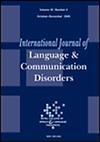Short- and Longer-Term Effects of Three Intensive Straw Phonation Interventions on the Voice of Female Speech-Language Pathology Students With Mild Dysphonia: A Randomized Controlled Trial
Abstract
Purpose
The purpose of this study was to examine the short- and longer-term effects (3-month follow-up) of a 1-month intensive straw phonation (SP) therapy on the voice quality and voice-related quality of life of female speech-language pathology (SLP) students with mild dysphonia.
Method
Thirty-two female SLP students (mean age: 18.5 years, range: 17.8–19.8 years) with mild dysphonia were included in this study. A randomized controlled trial was used with three experimental groups and a control group. The experimental groups received a short-term intensive voice therapy of one month with SP in air (n = 8), SP in 2 cm water (n = 8) or SP in 5 cm water (n = 8). The control group (n = 8) received a comparable voice therapy by using [u] phonation with similar soft onset and slightly pursed lips as in SP but without a straw. Three maintenance sessions were provided via telepractice in the next month. A multidimensional voice assessment was performed immediately before therapy (pre), immediately after therapy (post 1) and at 1 month (after the maintenance therapy = post 2) and 3 months follow-up (post 3) by an assessor blinded to the group assignment and study phase.
Results
No significant time-by-group interactions were found for any of the outcome measures, indicating no significant differences in evolution over time among the four groups. Primary outcomes: Within-group analyses showed a significant increase (improvement) in Dysphonia Severity Index (DSI) between post 1 and post 2 in the SP in 2 cm water group. Trends of improvement were visible in DSI between pre and post 1 in the SP in air group, and between pre/post 1 and post 2 in the SP in 5 cm water group. A clinically relevant decrease (improvement) in Acoustic Voice Quality Index (AVQI) was found between pre and post 1 in the SP in 2 cm water group. Secondary outcomes: Within-group analyses further showed a significant increase in the SP in 2 cm water group in the highest intensity between pre and post 1/post 2, a significant decrease in the lowest frequency between pre and post 3, and a significant decrease in Vocal Fatigue Index between pre and post 1/post 2. The SP in the air group showed an increase in the highest frequency between pre and post 2. The SP in 5 cm water group showed improvements in the auditory-perceptual parameters, roughness, and strain between pre and post 1.
Conclusions
Positive effects were found for the three SP interventions. The most promising results were found for SP in 2 cm water, suggesting an optimal impedance match between the glottis and the vocal tract in this specific population of female SLP students with mild dysphonia.
WHAT THIS PAPER ADDS
- Straw phonation (SP) exercises have shown positive effective for patients with dysphonia. However, to date, there remains a lack of clarity regarding the training conditions generating the most optimal effects, emphasizing the need for further research. For example, there is still uncertainty about a potential additional benefit of submerging the straw in water, creating extra resistance to airflow and a potential massage-like effect. To date, most studies investigated the immediate effects of SP. Consequently, there is limited evidence regarding whether a SP intervention results in a more economical and efficient voice production in the longer term.
- The purpose of this study was to examine the short- and longer-term effects (3 months follow-up) of a one-month intensive SP intervention on the voice quality and voice-related quality of life of female speech-language pathology (SLP) students diagnosed with mild dysphonia, using a randomized controlled trial. The effects of SP in air, SP in 2cm water and SP in 5cm water were compared. Positive effects were found for the three SP interventions. However, the most promising results were found for SP in 2cm water, suggesting an optimal impedance match between the glottis and the vocal tract in this specific population.
- In line with the current state of the art, an intervention using straw phonation (with stirring straws) demonstrated positive effects on the phonation of the investigated female SLP students with mild dysphonia. Among the three conditions tested, a stirring straw submerged 2 cm in water appeared to be the most effective for this population. Further research is needed to determine whether these findings extend to other voice users. The ultimate clinical goal of such efficacy studies is to refine and individualize the selection of SP types for specific populations in clinical practice. To achieve this, future large-scale randomized controlled trials focusing on specific patient subgroups are warranted.

 求助内容:
求助内容: 应助结果提醒方式:
应助结果提醒方式:


